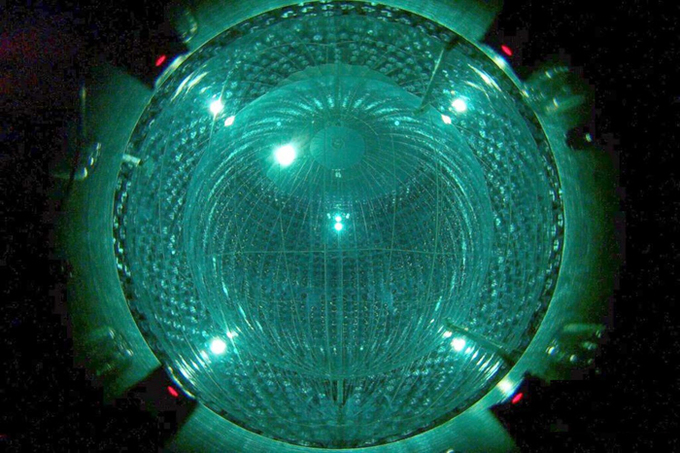Borexino-Ergebnisse sind einer der Top-10 "Breakthroughs" des Jahres
2014-12-19 – Nachrichten aus dem Physik-Department

Beinahe die gesamte Sonnenenergie wird während einer Kette von Kerneaktionen gebildet, die damit beginnt, dass zwei Protonen zu einem Deuterium-Kern fusionieren, und dabei ein Positron und ein niederenergetisches Neutrino aussenden. Theoretischen Berechnungen zufolge passieren jede Sekunde rund 60 Milliarden dieser Neutrinos durch einen Quadratzentimeter der Erde. Weil niederenergetische Neutrinos jedoch schwer zu detektieren sind, konnte die Theorie bislang nicht verifiziert werden. Nun ist es den Wissenschaftlern der Borexino-Kollaboration im italienischen Gran Sasso Untergrundlabor erstmals gelungen, diese niederenergetischen Sonnenneutrinos zu beobachten und damit die seit langem etablierte Theorie der Fusionsprozesse in der Sonne zu bestätigen.
Für die Wahl waren folgende Kriterien ausschlaggebend: eine fundamentale Bedeutung der Forschung, ein wesentlicher Erkenntniszugewinn, eine starke Verbindung zwischen Theorie und Experiment und das allgemeine Interesse für alle Physiker. Auf Platz eins als wichtigsten “Breakthrough of the Year” wählte Physics World die Rosetta Mission der ESA für die erste Landung einer Raumsonde auf einem Kometen. Physics World ist das Mitgliedermagazin des britischen Institute of Physics (IOP), das weltweit mehr als 34.000 Mitglieder hat.
- Redaktion
- Petra Riedel, Dr. Johannes Wiedersich
Weitere Informationen
- Englisch: Comet landing named Physics World 2014 Breakthrough of the Year
- Borexino Detector
- Informative graphics about the study (pdf; 5,86 KB) (Copyright: Borexino Collaboration)
Originalveröffentlichung
Kontakt
| Prof. Dr. Stefan Schönert | Prof. Dr. Lothar Oberauer |
|---|---|
| schoenert@ph.tum.de | oberauer@ph.tum.de |